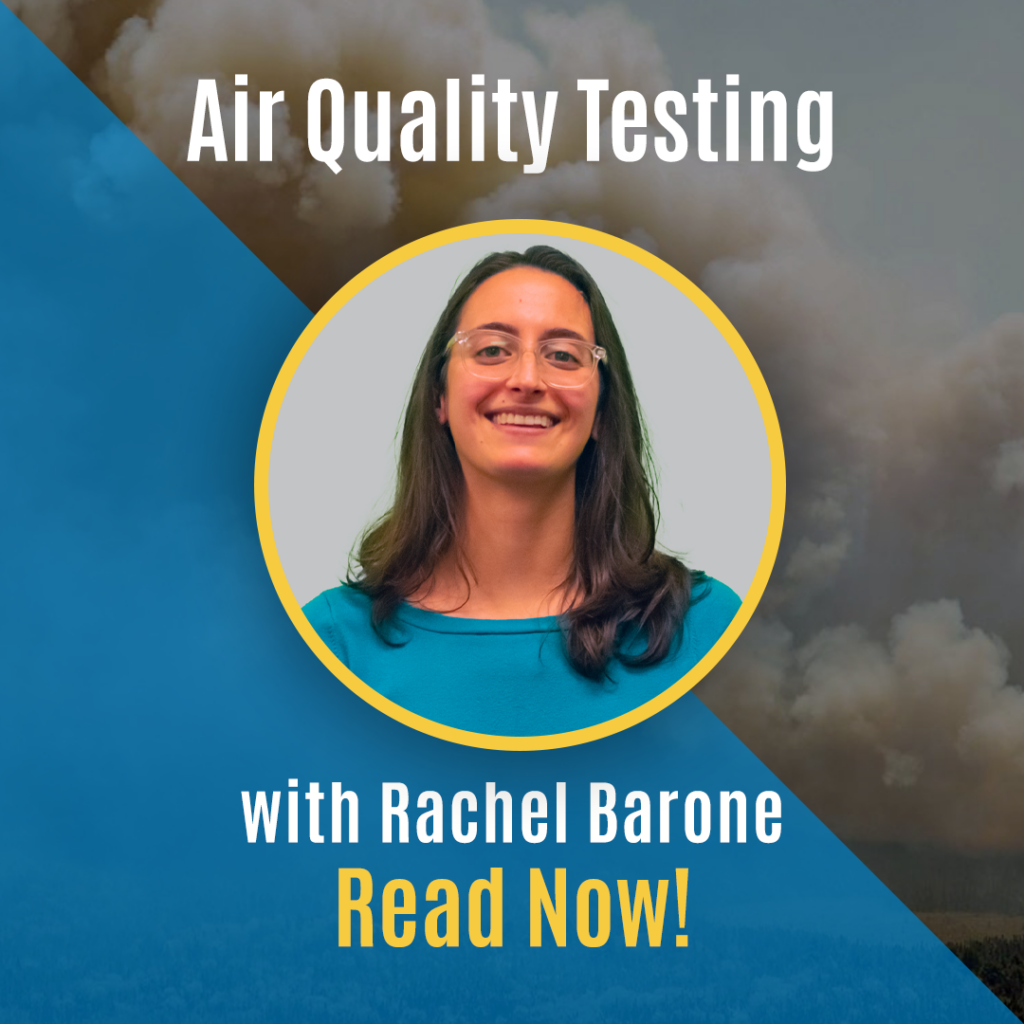At ECS, we constantly evolve and move toward the future and new capabilities in our industry. We talked with Environmental Staff Project Manager Rachel Barone, CHMM, in our Pittsburgh, PA, office to learn about air quality factors, air quality testing and indoor air quality.
Q: What is indoor air quality testing?
A: Indoor air quality (IAQ) testing takes a holistic approach to determine what is in the indoor air that we may not expect to be present and why. IAQ tests can measure variables such as volatile organic compounds, particulates, radon gas, dust composition and mold. The sampling results can point to potential sources of irritants or allergens that may be sources for building occupants’ health symptoms.
Q: Why is the United States Environmental Protection Agency (EPA) important concerning air quality?
A: The EPA is important because they have guidelines regarding airborne concentrations when working with asbestos or lead-based paint. However, when it comes to IAQ guidelines, there are no set standards from the EPA regarding air contaminants, like mold. We commonly deal with mold in our IAQ surveys, follow the most up-to-date industry practices and leverage professional expertise to make recommendations when EPA standards are unavailable.
Q: What pollutants or factors make air quality fluctuate and how do they affect IAQ?
A: When it comes to mold, spores are always present in indoor air. Our assessments look for elevated mold spore counts indoors compared to outdoors and/or mold species inside the building that are not observed outside. Regarding asbestos and lead paint, construction activities that disturb these materials can create hazardous airborne particles or fibers that could affect IAQ.
Another source of IAQ pollutants may be materials used in building construction. The United States Green Building Council’s (USGBC) Leadership in Energy and Environmental Design (LEED) certification program provides a framework for healthy, efficient, carbon and cost-saving green buildings. As part of the LEED program, ECS conducts IAQ testing to document that the materials used are not off-gassing harmful chemicals such as volatile organic compounds (VOCs) or formaldehyde.
Q: Can outside factors affect indoor air quality?
A: Yes. If your windows are open or when you walk outside, your clothes and shoes can bring mold spores inside, as they are ubiquitous in the environment. Also, recently with the Canadian wildfires, air quality was affected tremendously as particulate matter traveled all over the East Coast. With open windows or air intakes, those particulates enter a building.
Q: What risks can poor air quality bring to homes, offices or buildings?
A: Poor air quality can cause people to become sick and can aggravate existing illnesses. The goal of our work is to protect human health and the environment. We strive to reach levels of air quality that meet regulatory requirements or guidelines for each type of test we perform, whether it’s asbestos, mold or lead paint.
Q: Typically, what types of devices should every building have to monitor air quality?
A: In terms of air quality devices, most are expensive and therefore, unrealistic for many building managers. However, a great alternative is regular maintenance of HVAC ductwork and changing the filters are important. Additionally, ECS typically recommends monitoring appropriate temperature and relative humidity levels within a building. Temperature and relative humidity are especially important because these are the main factors promoting mold growth. Staying below 60% relative humidity and around 68 to 74 degrees Fahrenheit are reasonable ranges.
Q: What safety measures, training and practices does ECS apply to promote safety for workers and clients on these jobs?
A: ECS prioritizes safety. Proper PPE use and handling of test equipment are vital to maintaining a safe environment. ECS trains the staff on the safest practices to keep us, our clients and the public safe during and after the job.

